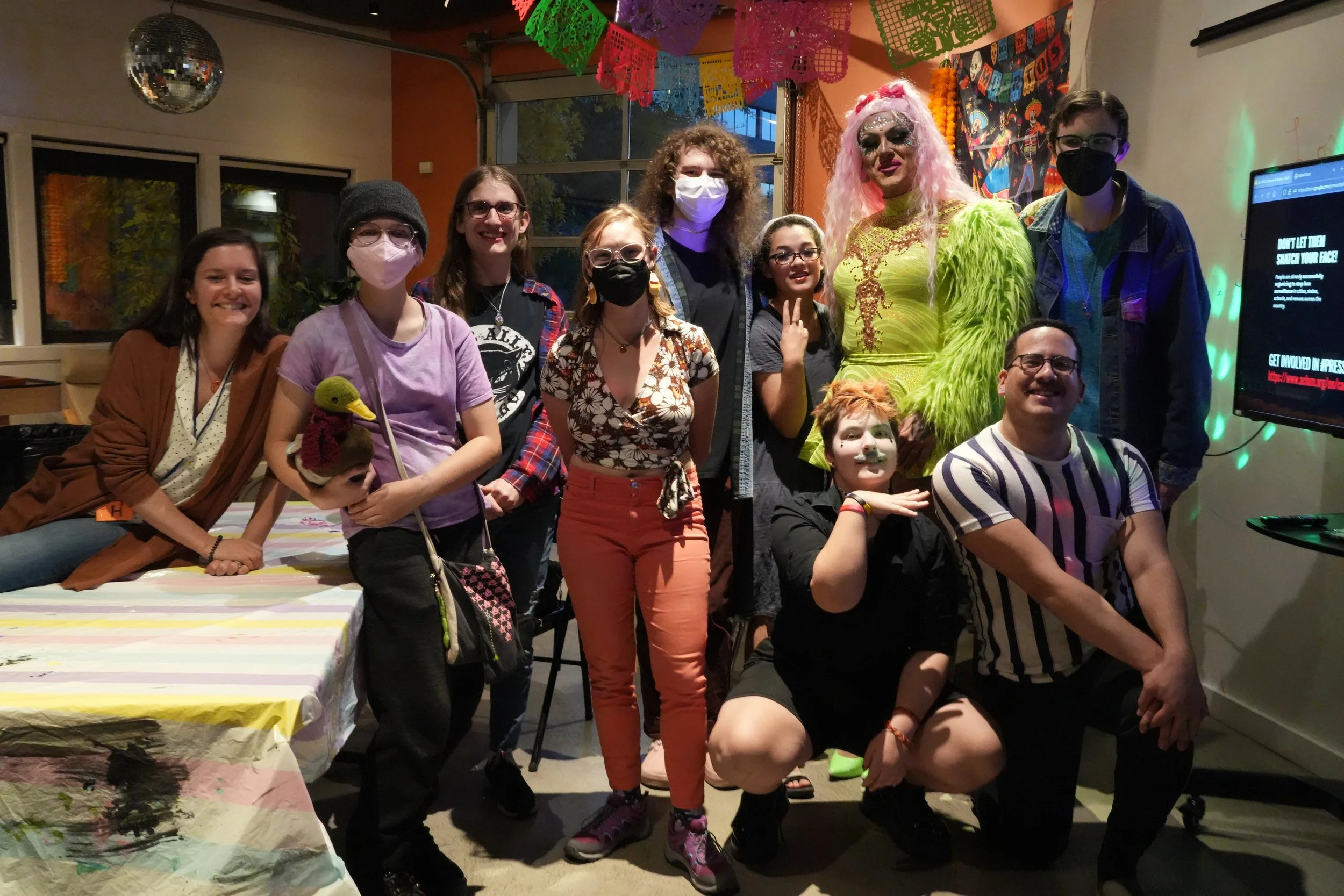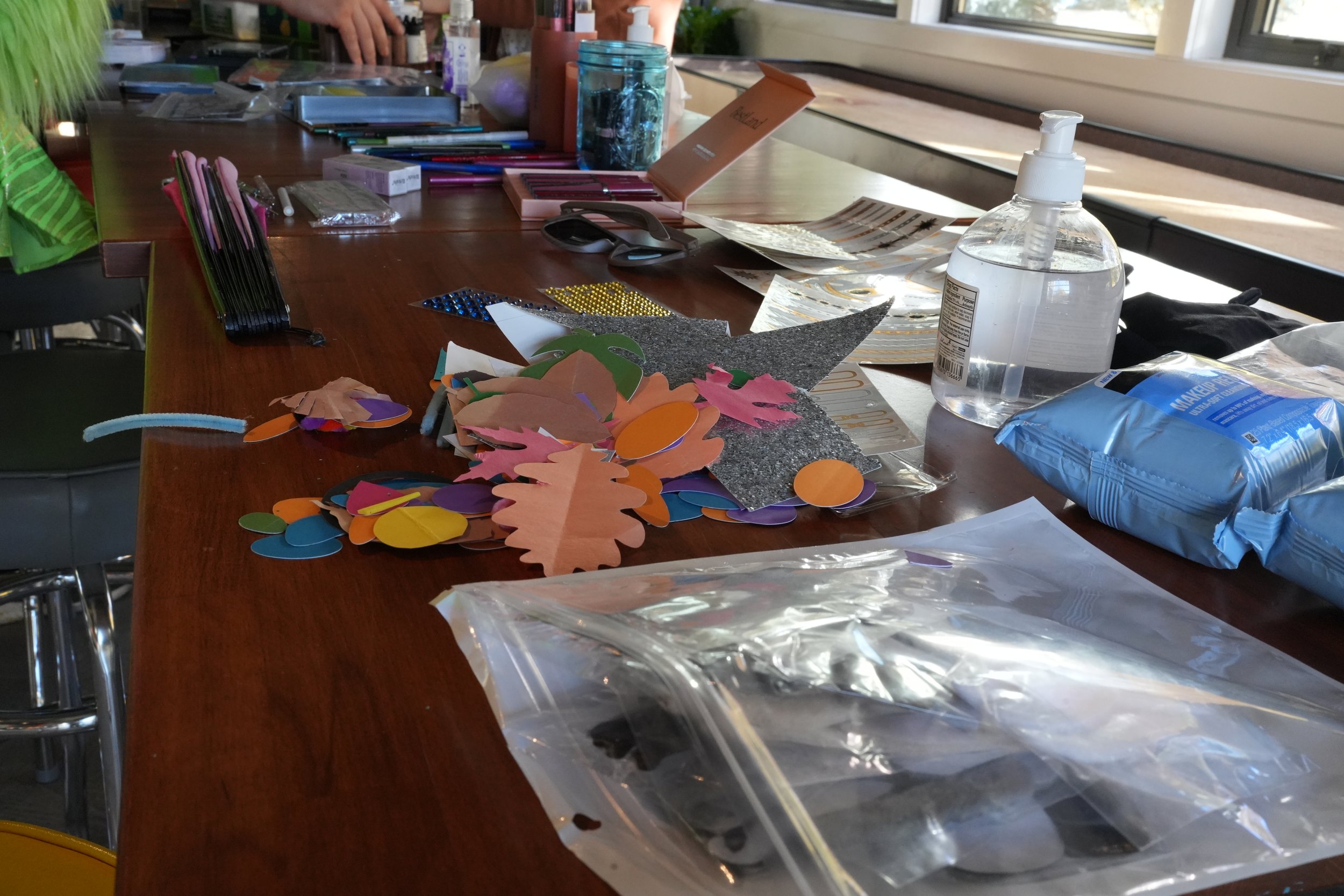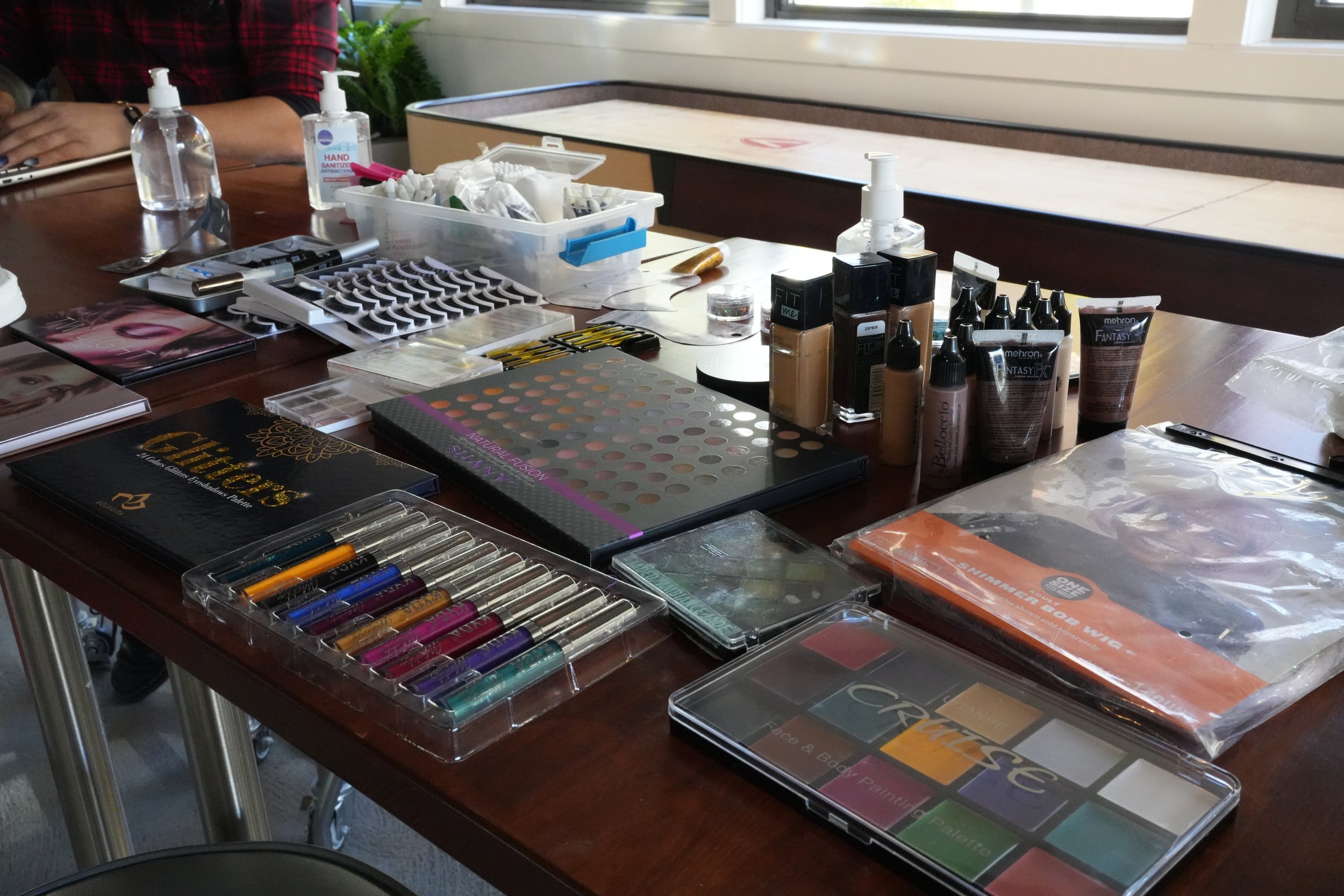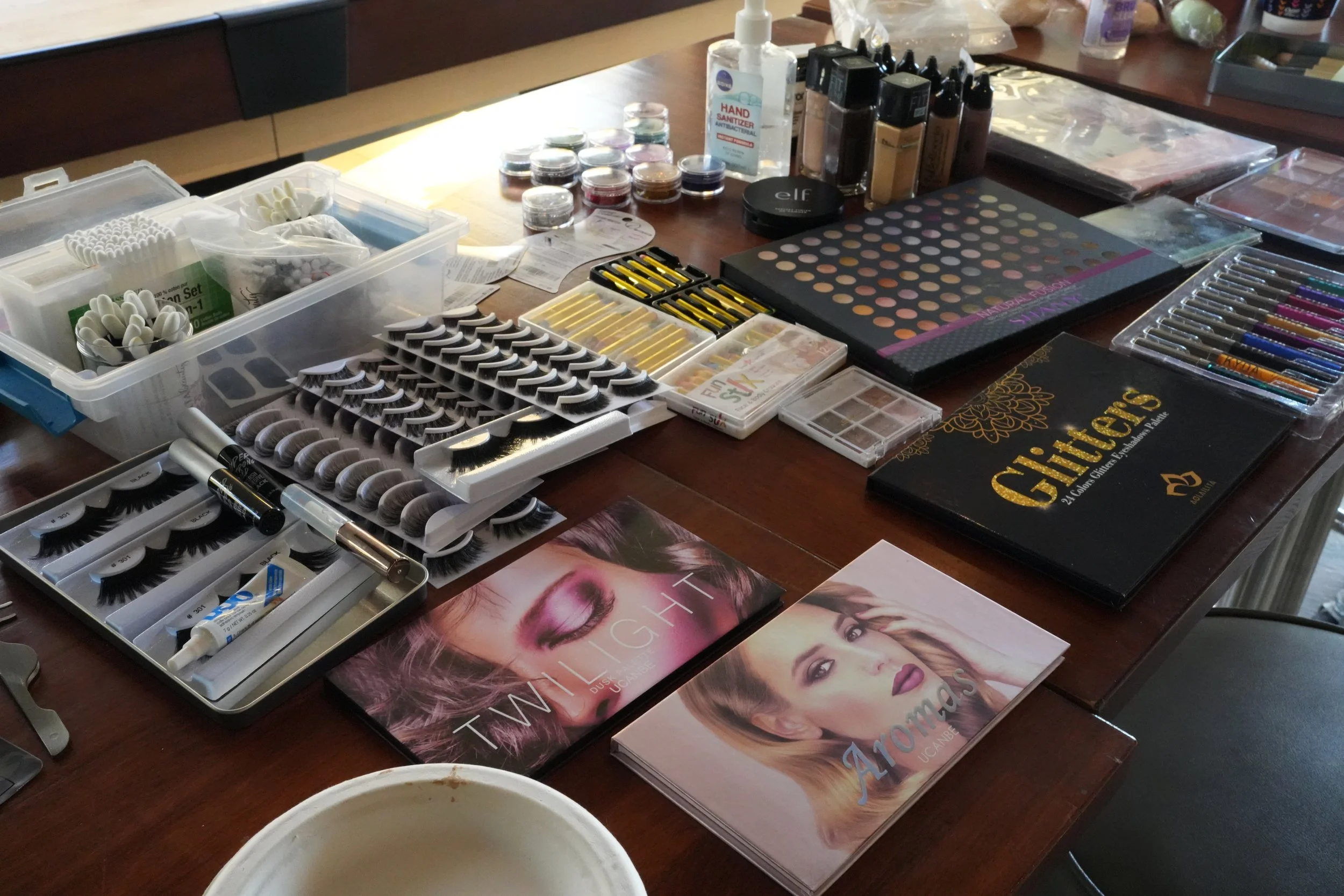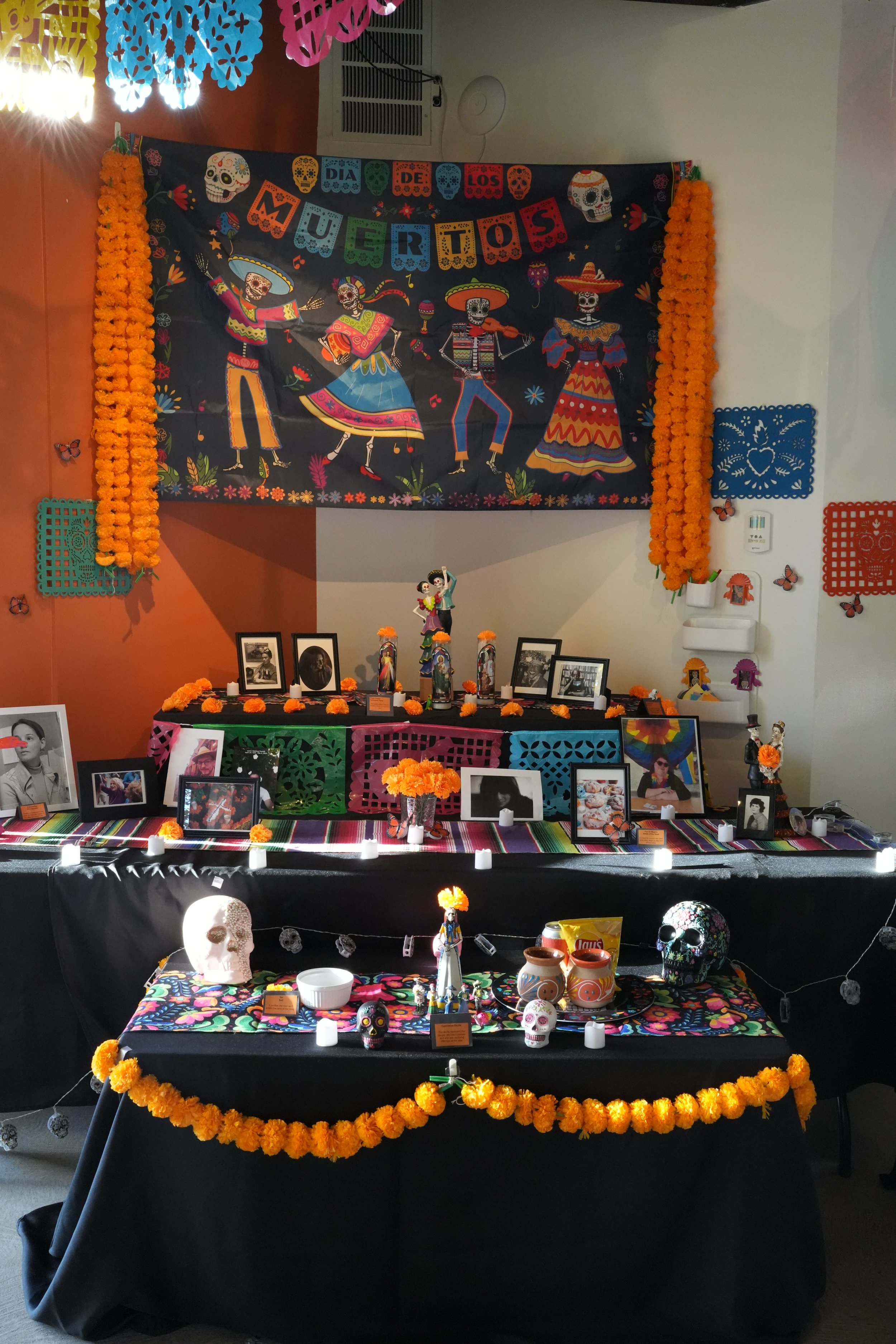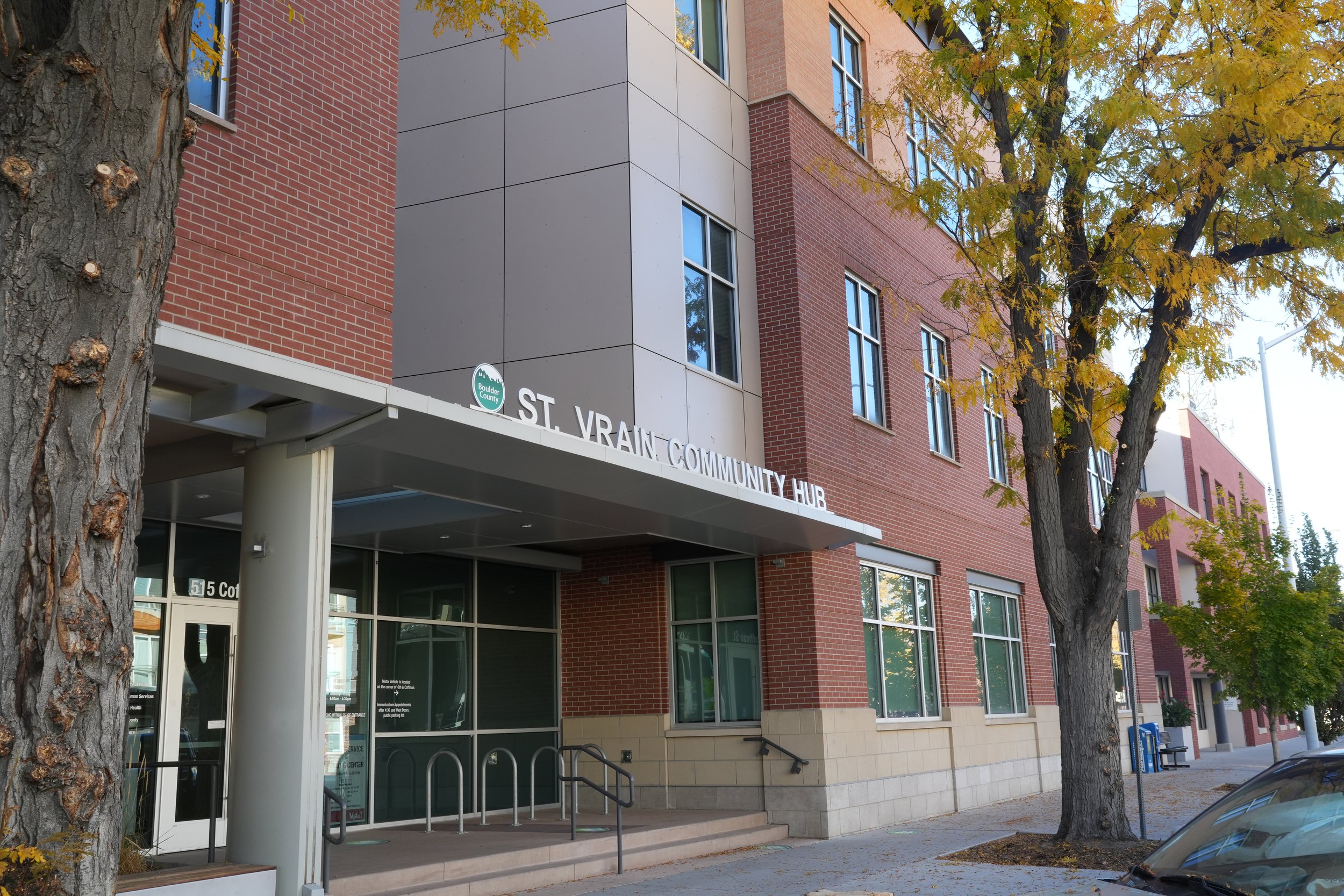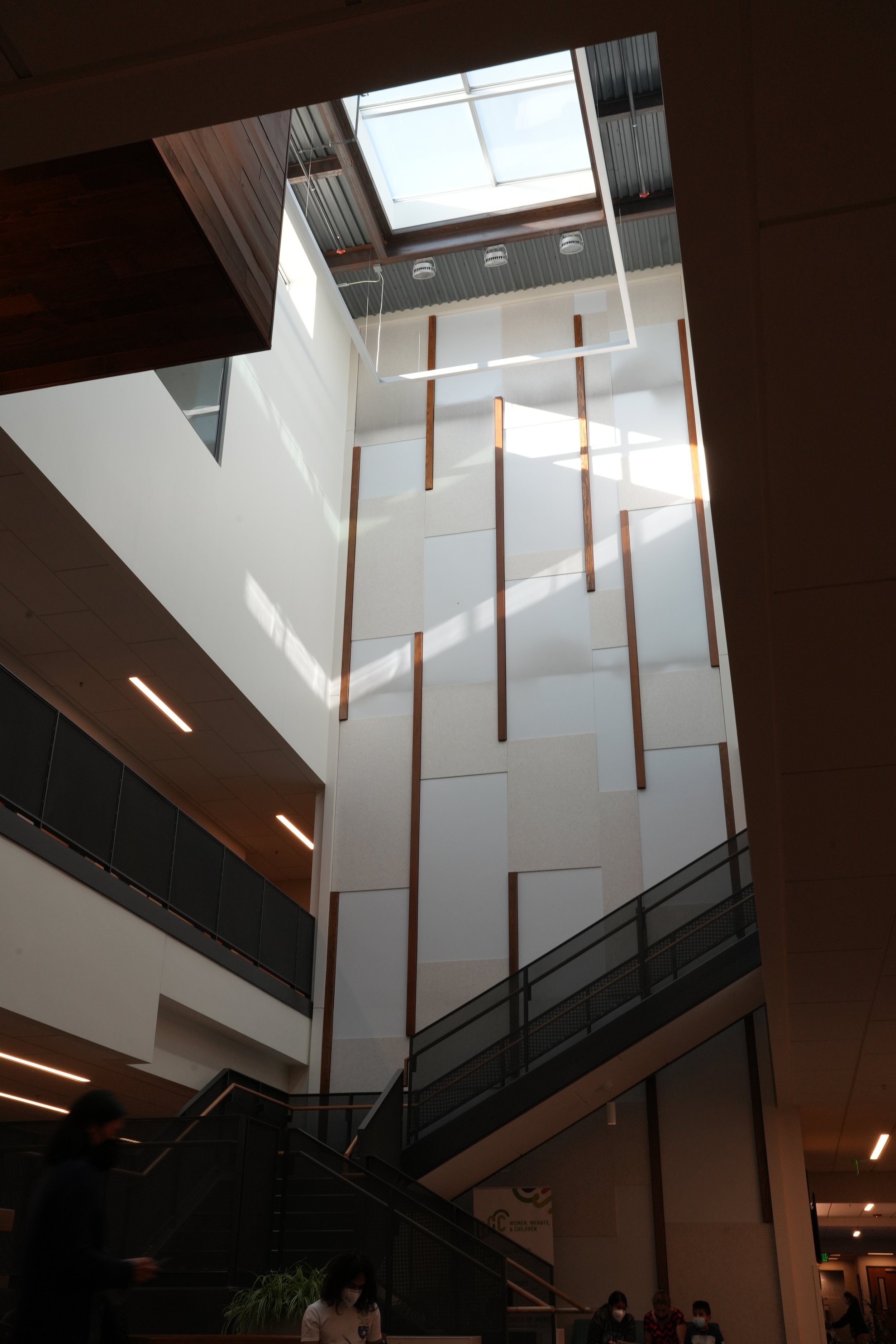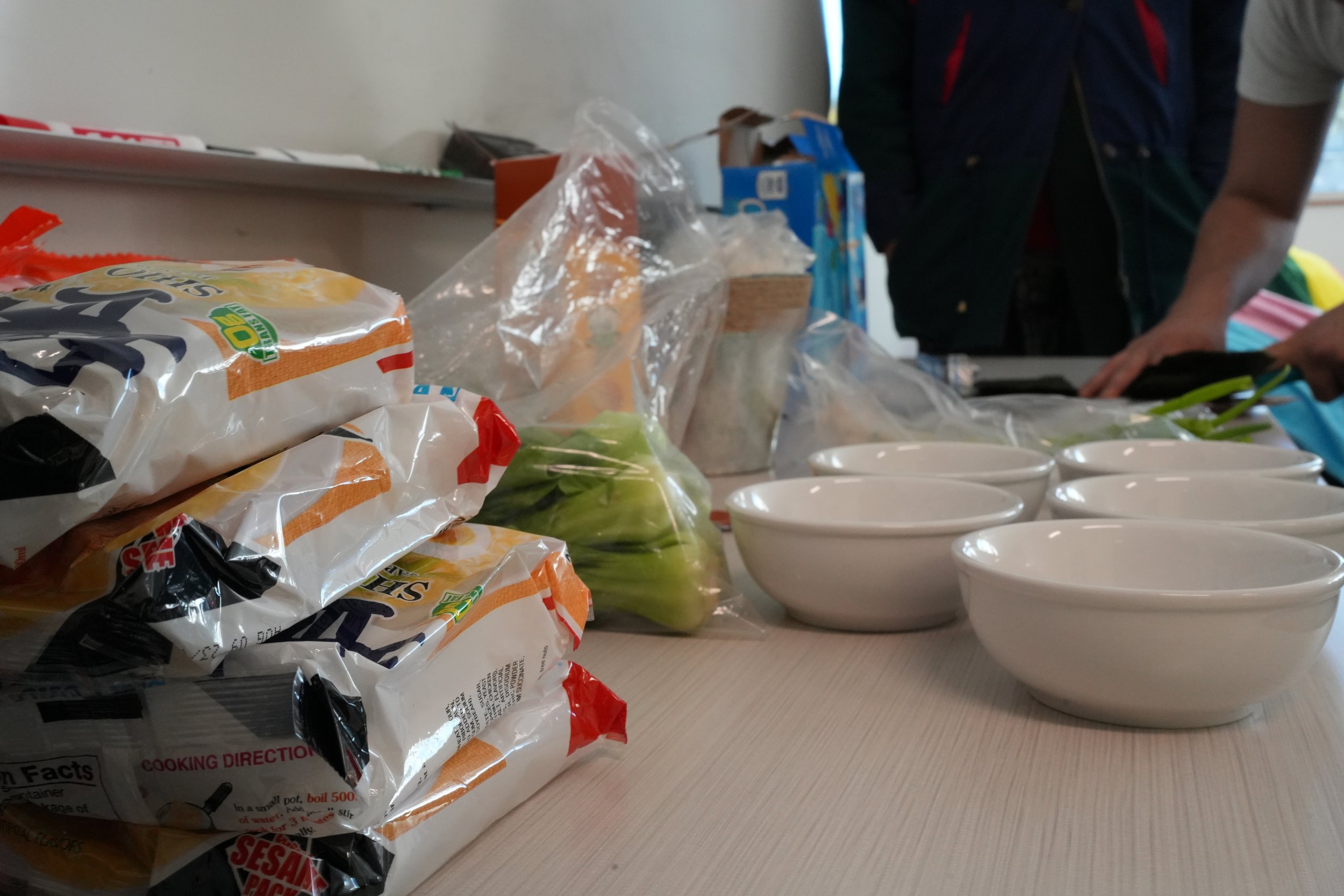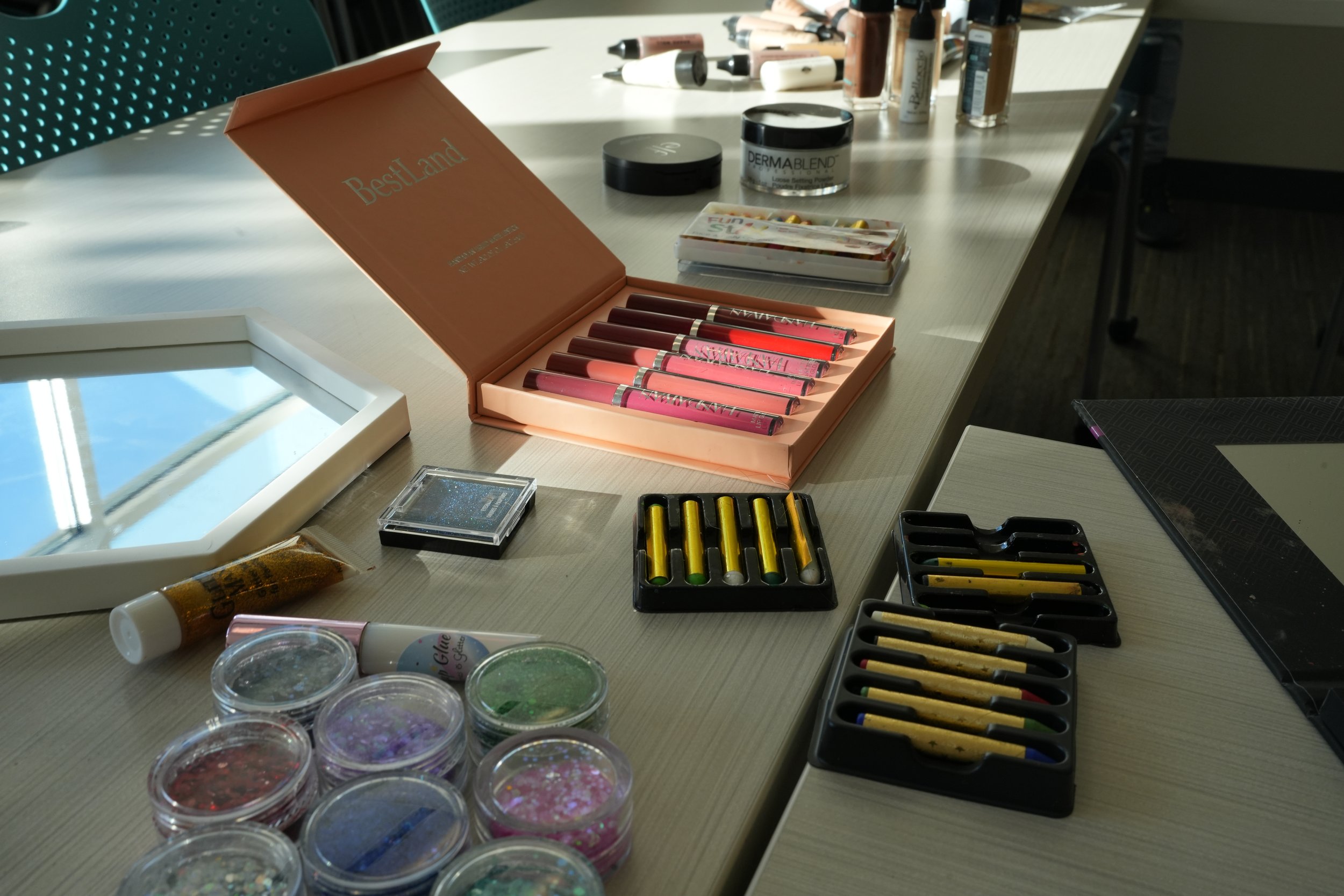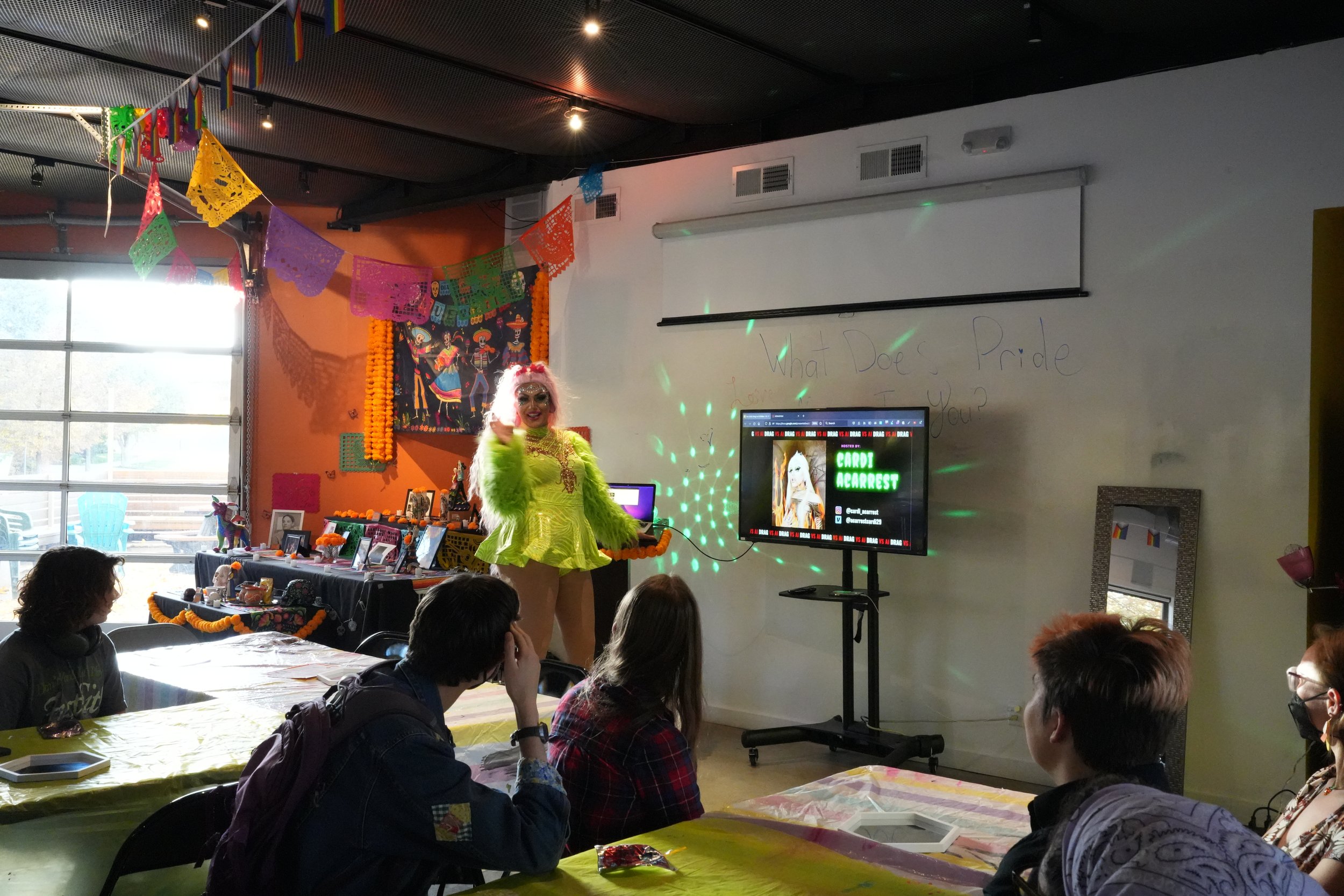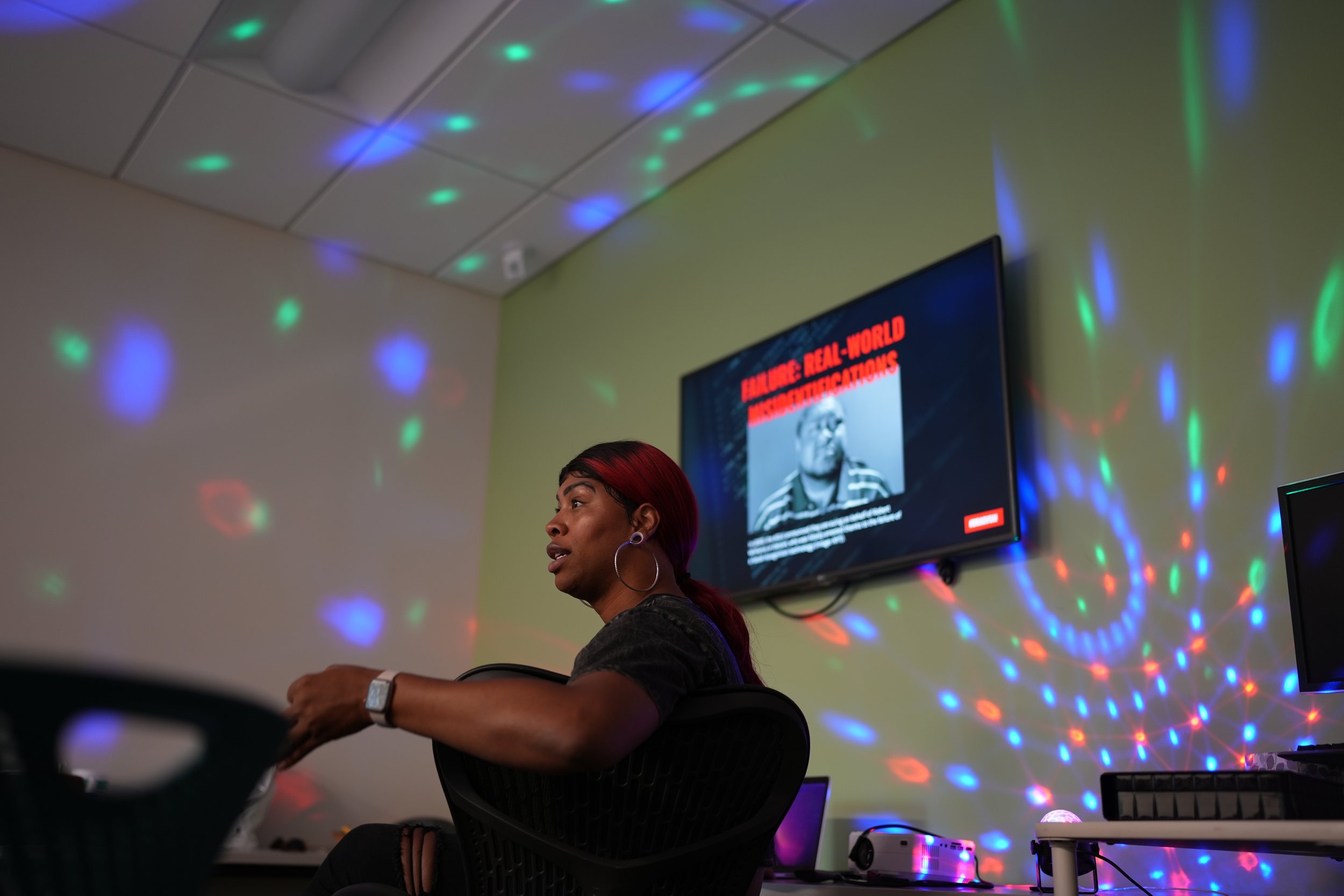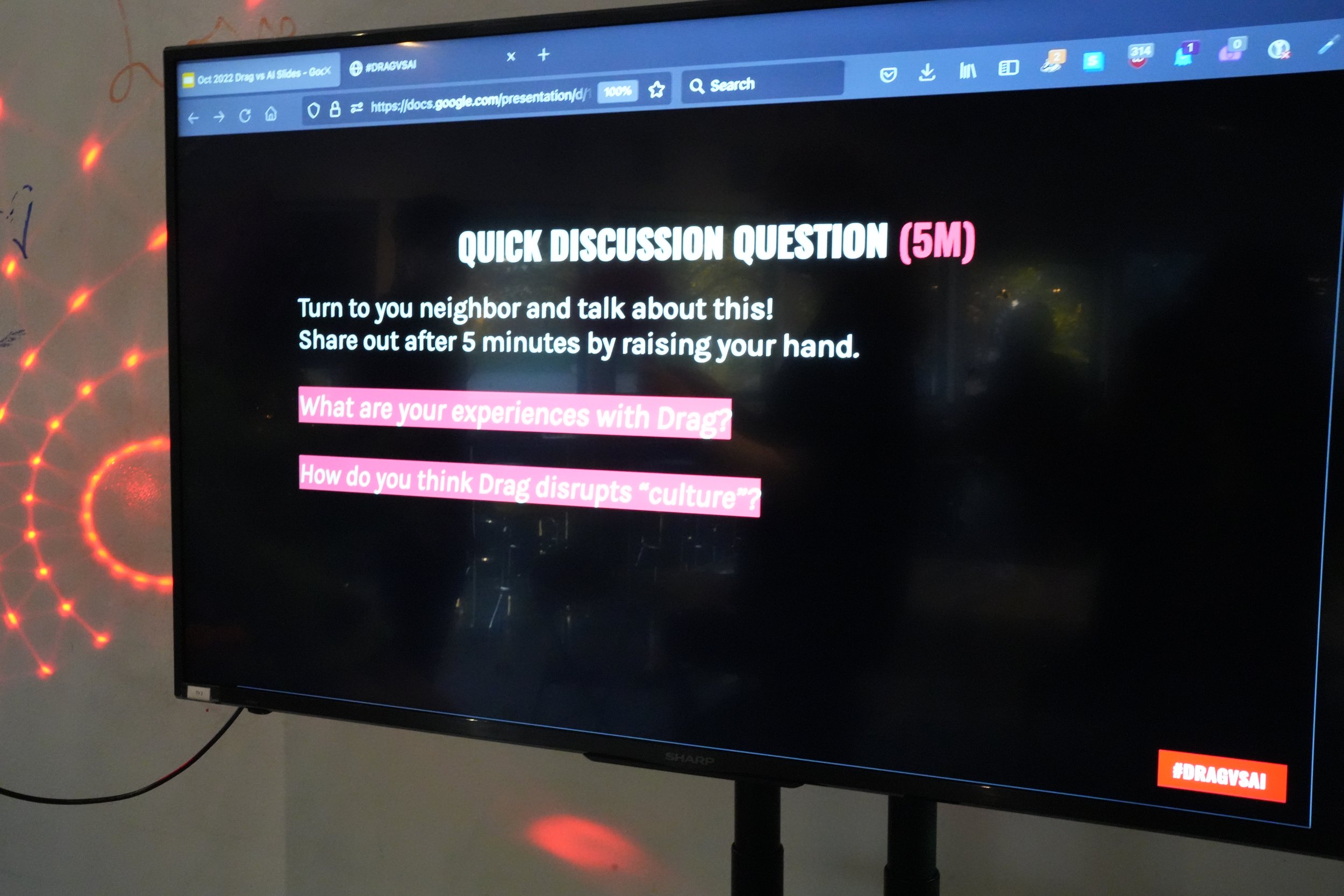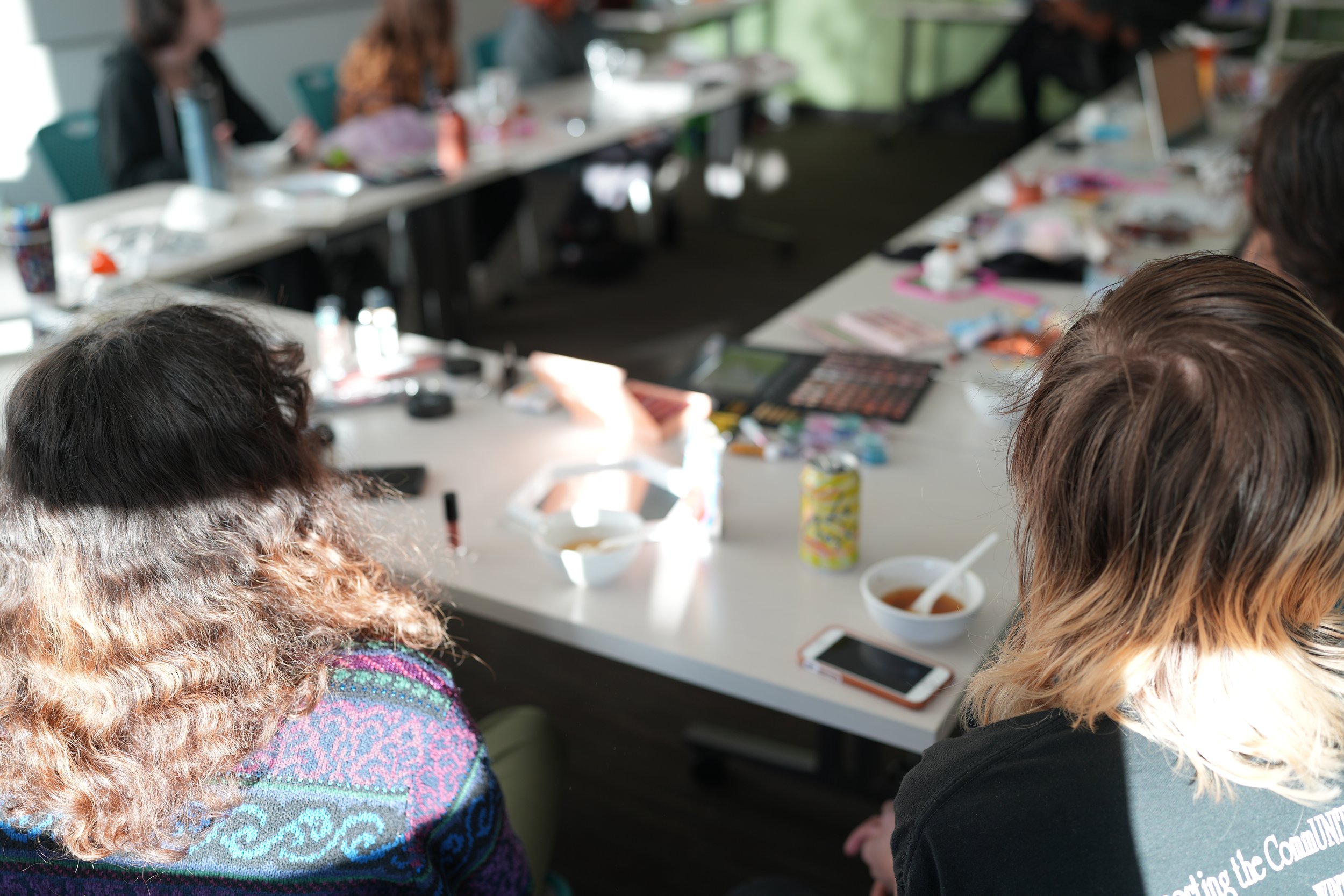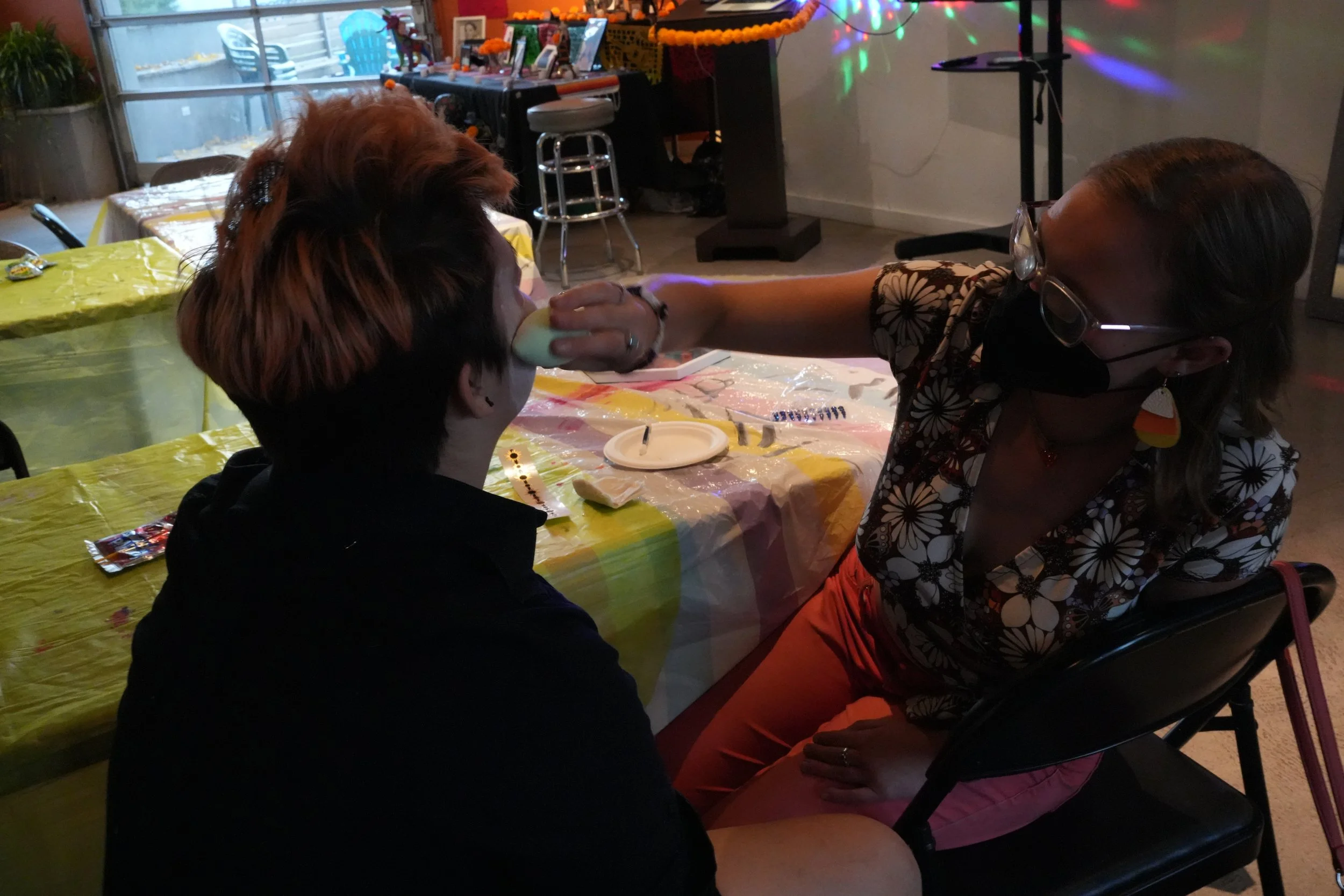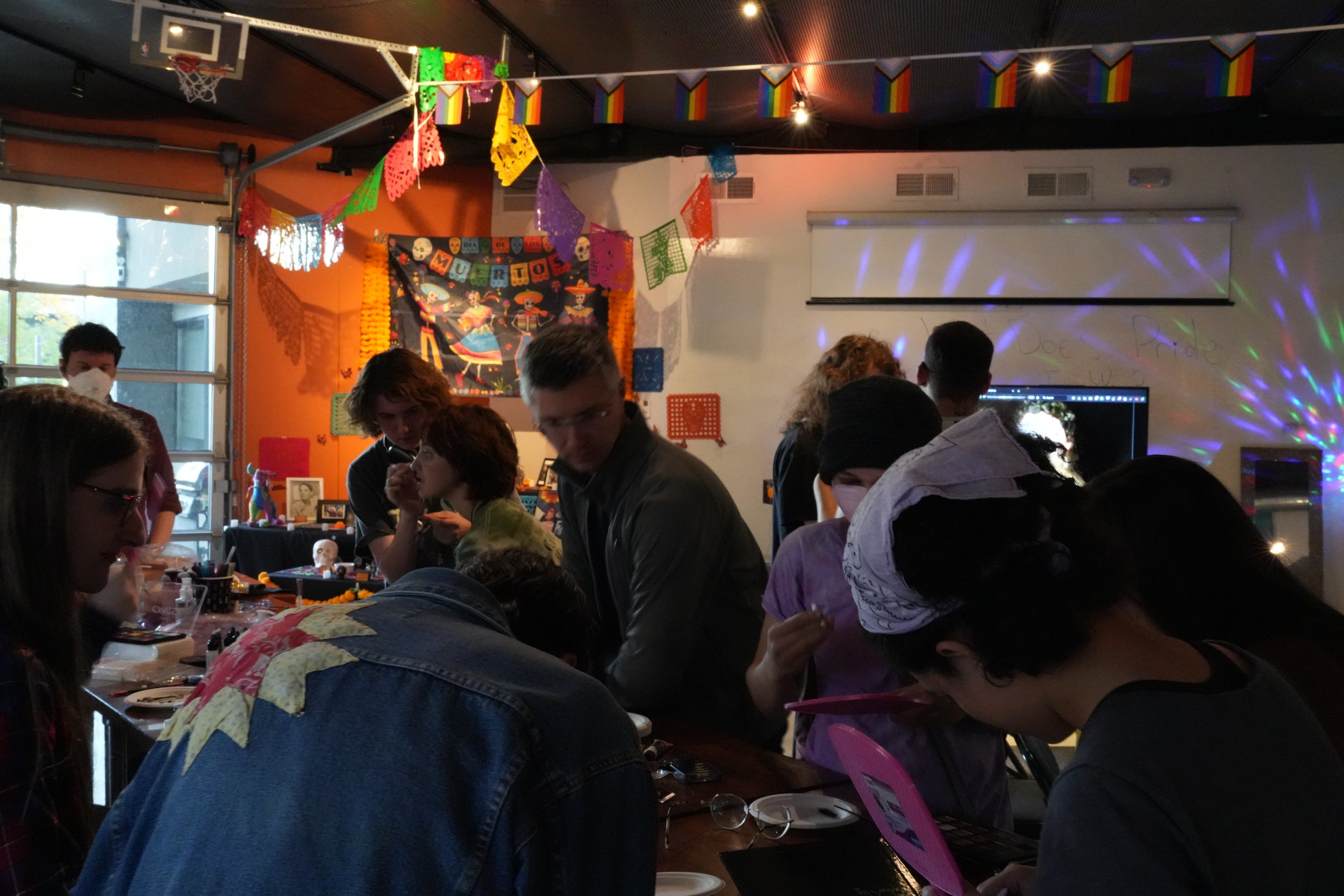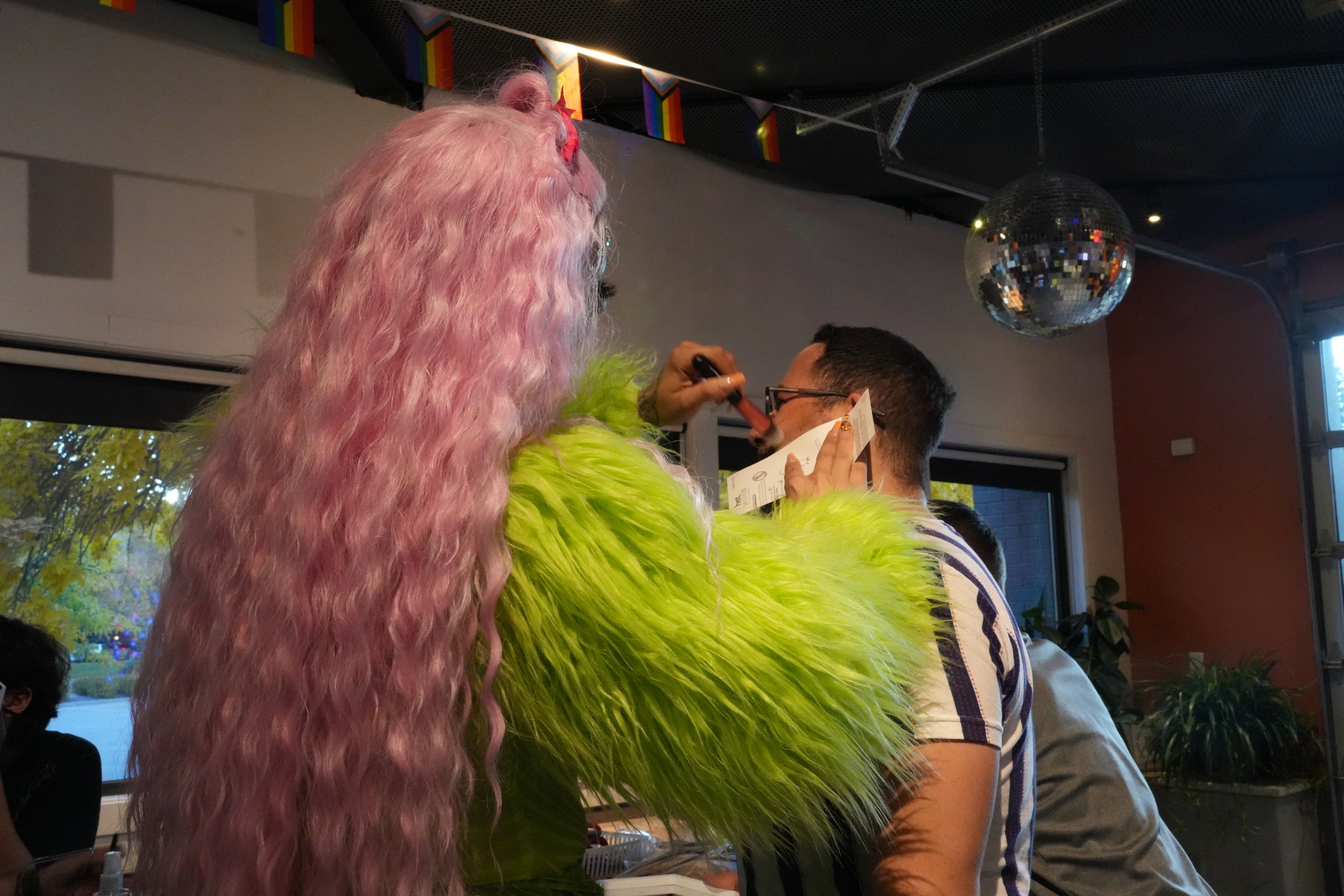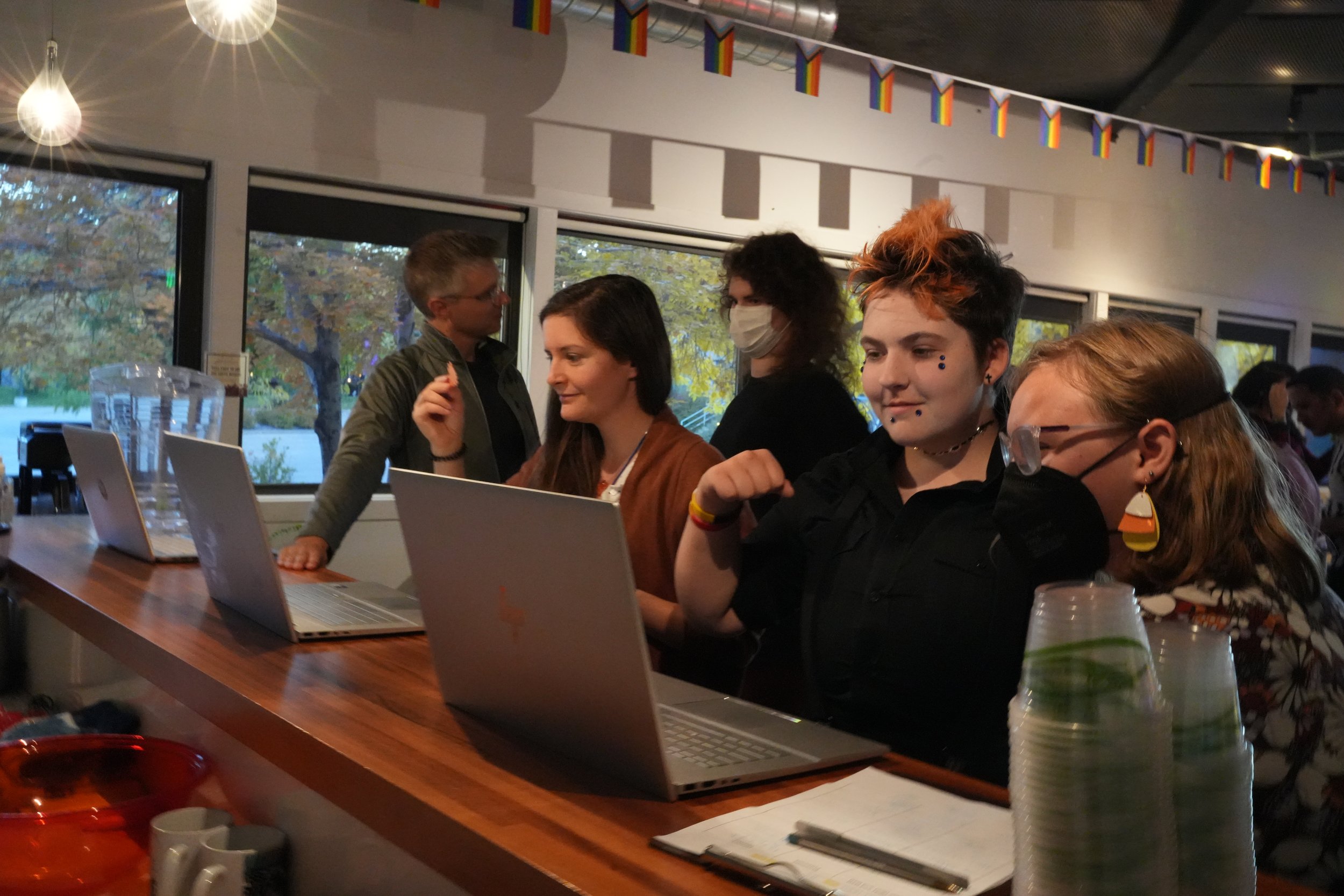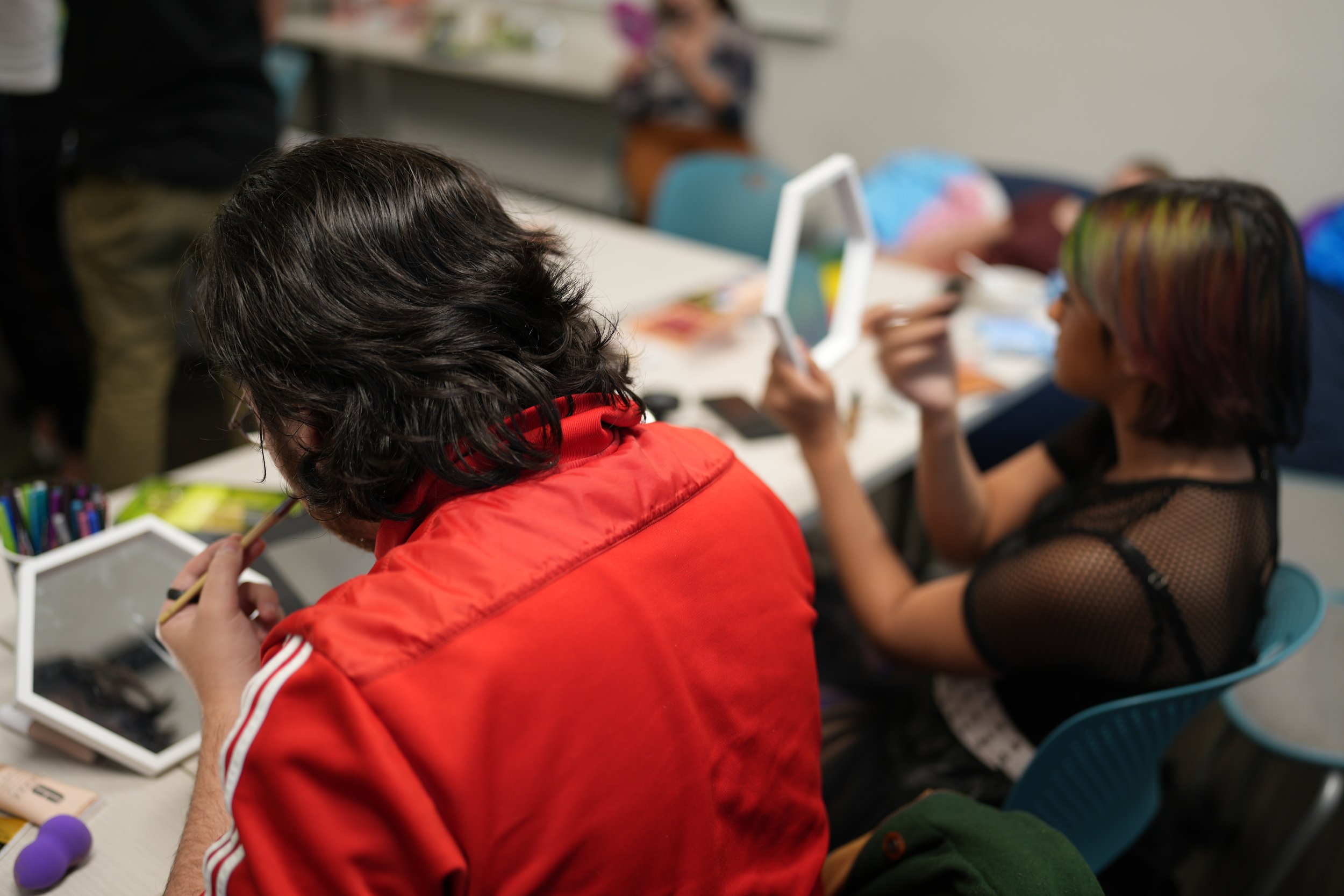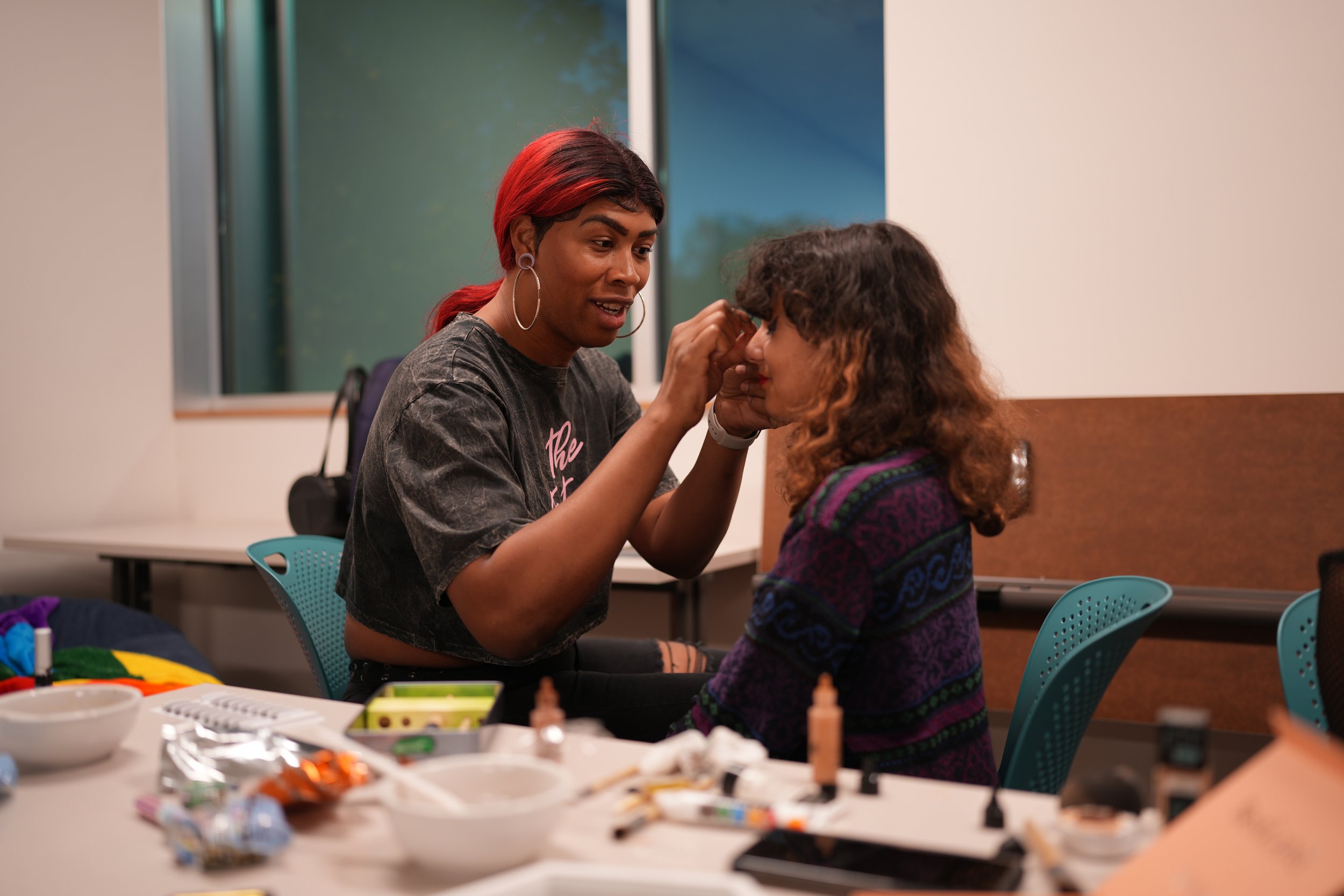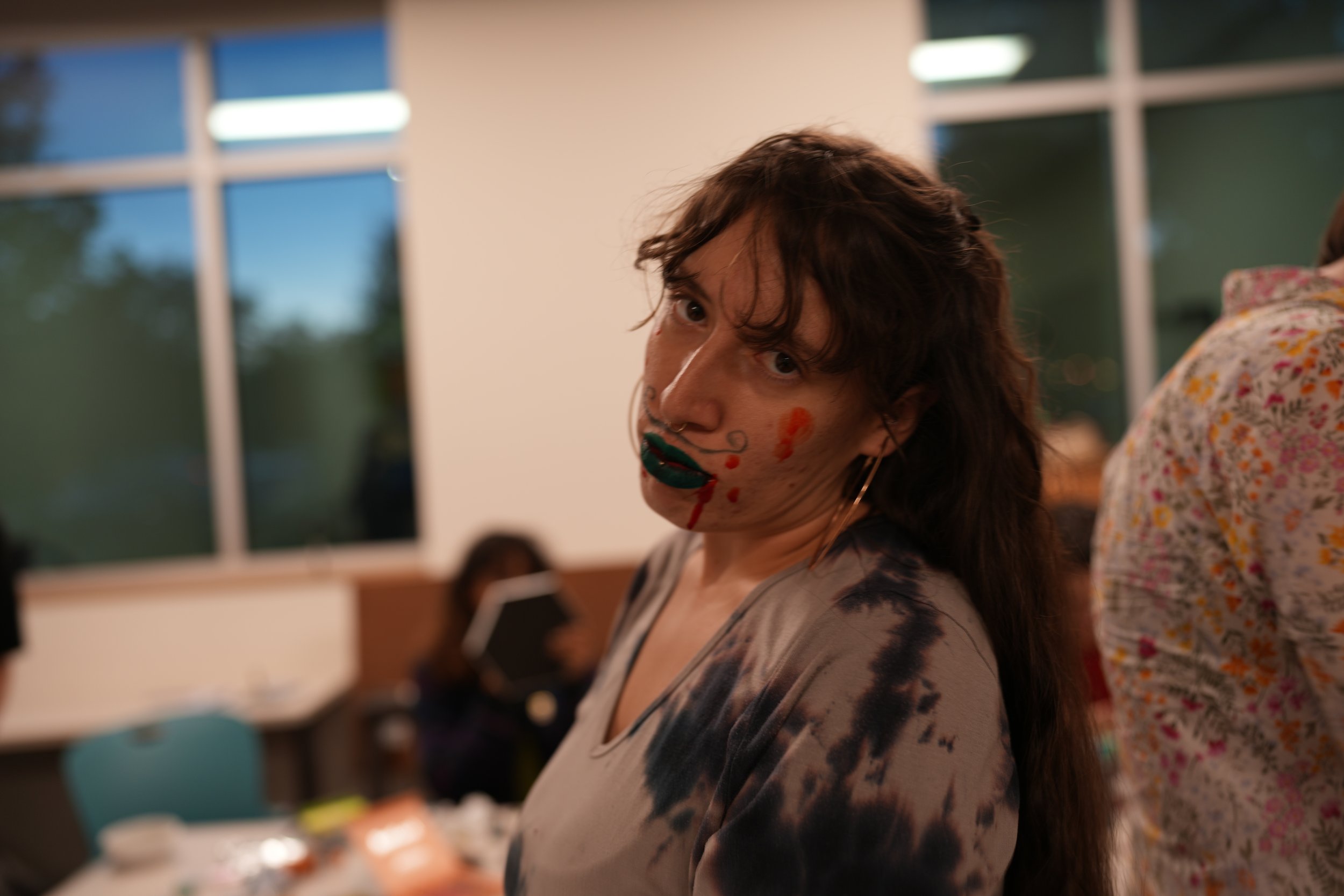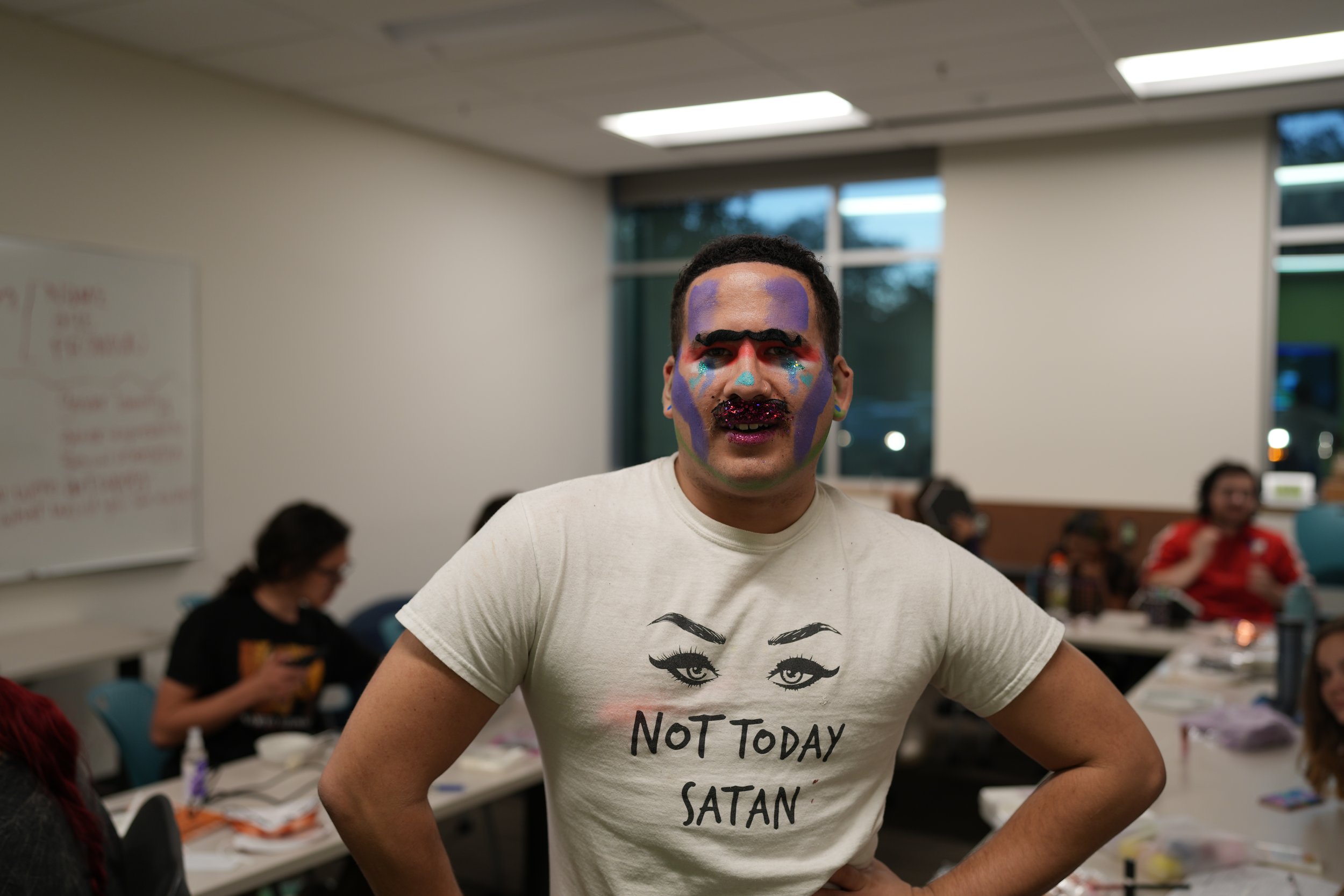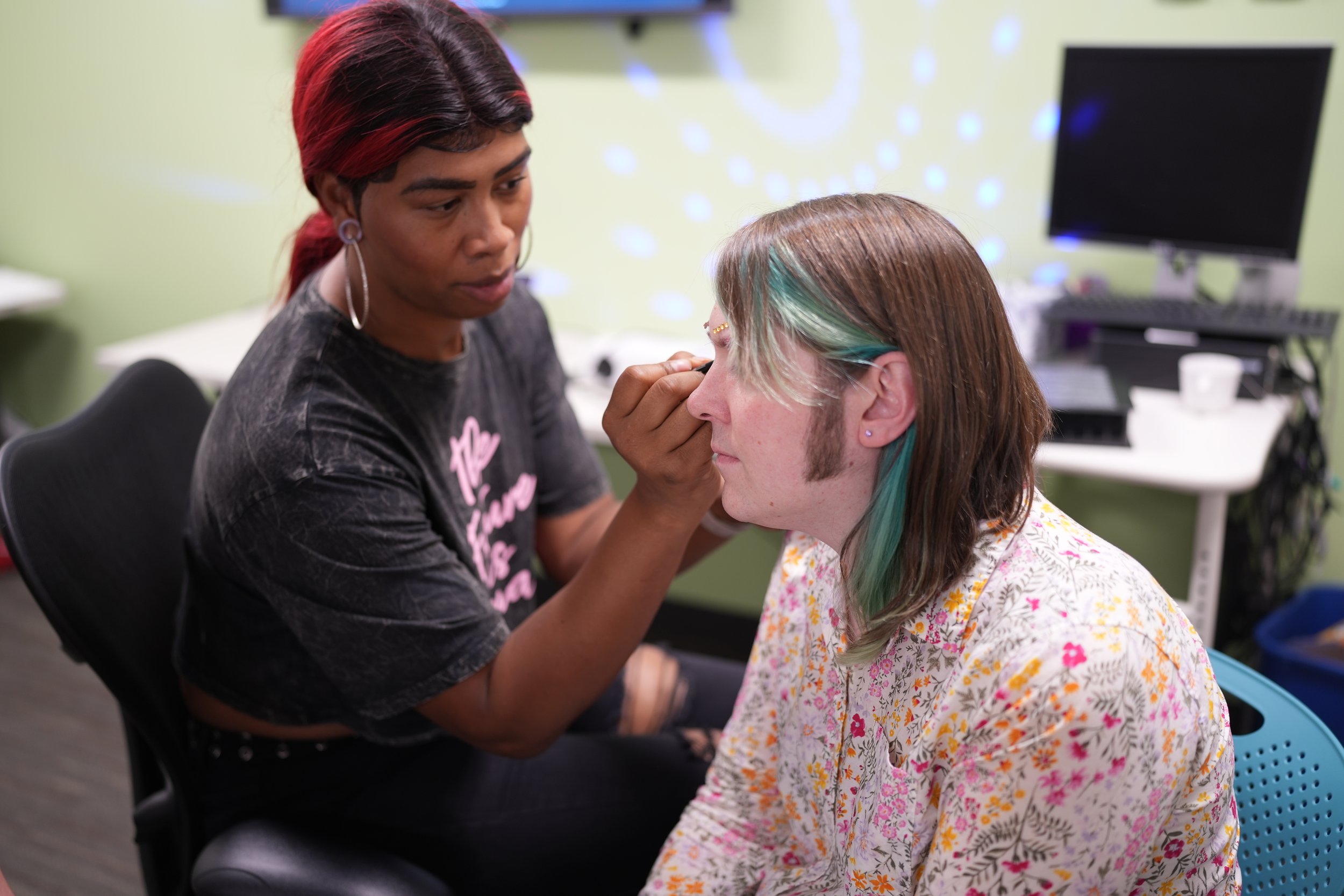Drag queens lead teens in makeup art to avoid facial recognition
Last week, Creative Communities hosted its second year of Halloween-time Drag vs AI workshops in partnership with local LGBTQ+ organizations, Out Boulder County and OASOS . Cardi Acarrest and LeeLee Twirling Tech Goddess LaBeija led LGBTQ+ teens in two workshops about facial recognition technologies (FRTs), AI harm, and makeup art as a medium for joyful resistance of mass surveillance.
We covered a lot of ground in the workshops – discussing and learning about how FRTs work, how their misuse and/or biased designs impact people’s lives, and how drag art and other queer aesthetics can disrupt these AI harms and mainstream culture at large. Then, we got hands-on with makeup and tried to fool a real-life AI-powered facial recognition tool!
The workshop was originally designed by the Algorithmic Justice League - check out their website to see more of the cool stuff they do and request access to the workshop materials.
Right now my community partners and I are preparing more in-depth analyses of past workshops. In this post, I want to share some photos and reflections to give a sense of what organizing and attending this round of workshops looked and felt like.
1- Workshop setups
Our first workshop took place in the large main room of OBC’s new building. We set up three areas - one for slide presentation and discussion time, one with all of our makeup and accessories, and one with laptops for checking the AI’s guesses. Also, check out their ofrenda (altar) for Día de los Muertos.
We had our second workshop in a city public meeting room. For this one, we spread the makeup and accessories across the tables where people sat, and just had one laptop projecting the AI’s guesses on a larger screen. We also cooked a ramen dinner!
2- Discussing FRTs, AI harm, and drag
After introductions, Cardi and LeeLee facilitated discussion and learning about the topics at hand: what are FRTs? How do they work? Who can be impacted by their misuse and/or discriminatory design, and what are the real-world consequences?
We watched this video of workshop designer, Dr. Joy Buolamwini, presenting her poem about this very topic.
We also talked about how makeup art and drag techniques in particular can be a method for joyful self-expression and play; but also for fooling FRTs and disrupting AI harm. Using techniques like color blocking and contouring on our faces, we can control how FRTs perceive our genders, ages, emotions – and even go completely invisible.
To introduce this section, we watched this video from Allure about the history and meaning of drag culture.
3- Makeup time and wrap-up
Then we dug into the makeup supplies, trying to apply what we’d been discussing and learning and fool the AI. There were so many interesting makeup ideas in both workshops, from traditional masculinizing and feminizing drag techniques, to vampire and zombie looks, to more abstract combinations of color blocks, glitter, and rhinestones. Some people experimented with lots of color and makeup, and others tried out more subtle looks.
After makeup time, we did a quick debrief, and there was also a lot to share. Most people were able to change the AI’s reading but some in ways they didn’t expect. One person shared that when they put on a fake gray mustache, they were read as a 23 year old male. How would a 23 year old have a gray mustache? Others wondered, and we concluded that the AI was prioritizing other factors in its age guess, like smoothness of skin and head hair color, over facial hair color. Another shared that the AI could easily recognize their face even when they were wearing a mask, but wearing a mask and glasses made them invisible.
Several with trans-masculine and -feminine identities shared that the AI accurately labeled their gender, which was affirming. At the same time, the AI only labels gender as male or female, which left those with non-binary identities excluded – in the workshop’s terms, excoded. Several people also described the gender classification as confusing and inaccurate, speculating that the model was trained on cis-gender people presenting in standard ways.
Conclusion
As facial recognition and other AI-powered systems spread into more spaces with little to no meaningful consent from ordinary people, surveillance can feel inevitable and resistance can feel futile. But workshops like this one inspire me to re-evaluate the power of human creativity in the face of high-tech mass surveillance and find agency in surprising places, like my makeup shelf. Perhaps this is only surprising to people like me who live largely outside of drag and queer communities, because they have a long history and tradition of using makeup and other techniques to creatively manage self-presentation and visibility within systems of surveillance . We should recognize and honor drag queens as the experts of obfuscation, shape-shifting, and radical self-love and resistance that they are, and welcome them in educational spaces for learners of all ages. Although the workshops are over, I hope that others will carry this spirit of joy and resistance forward in new and interesting ways. Thank you to Chris Castañeda, David Kling, Cardi Acarrest, LeeLee LaBeija, and all of our lovely volunteers and participants!
